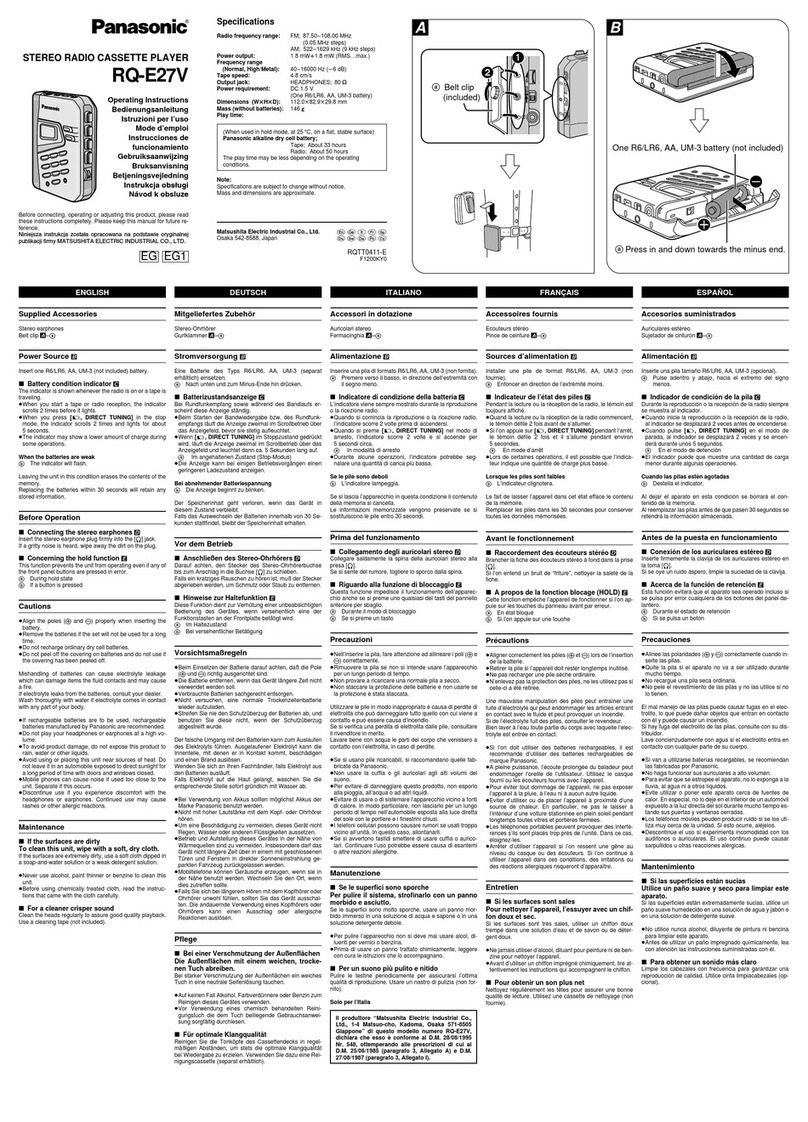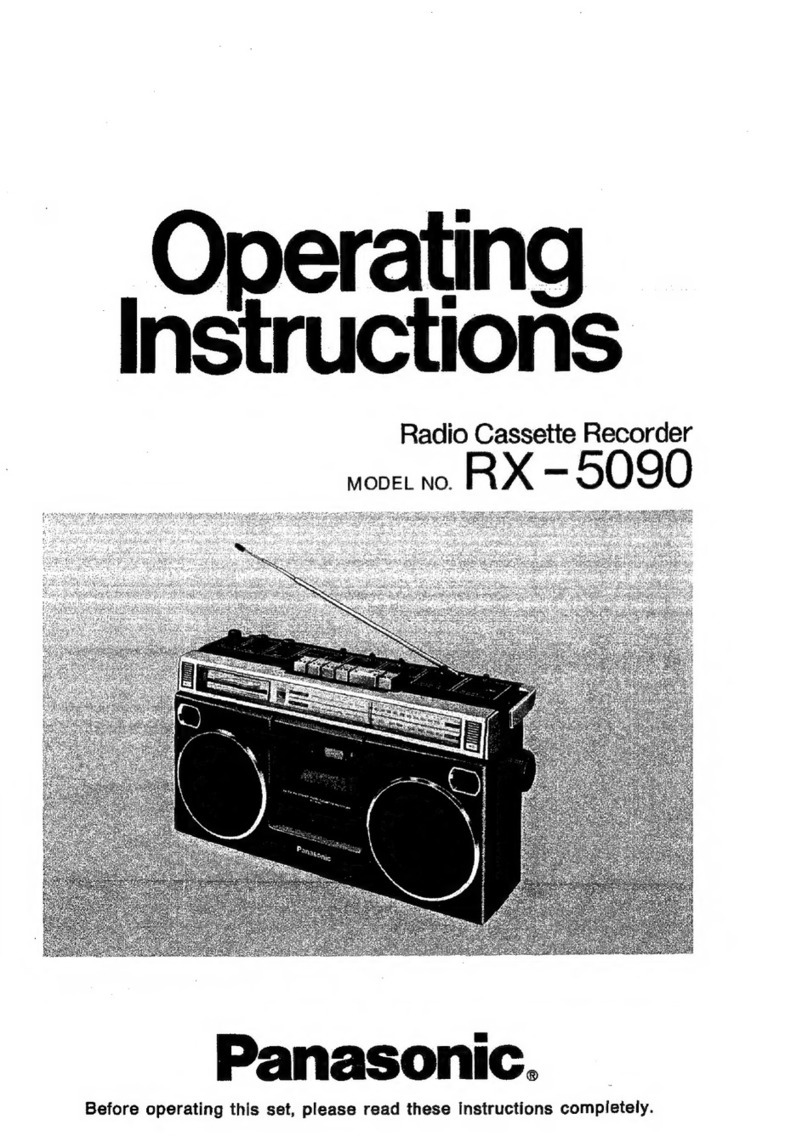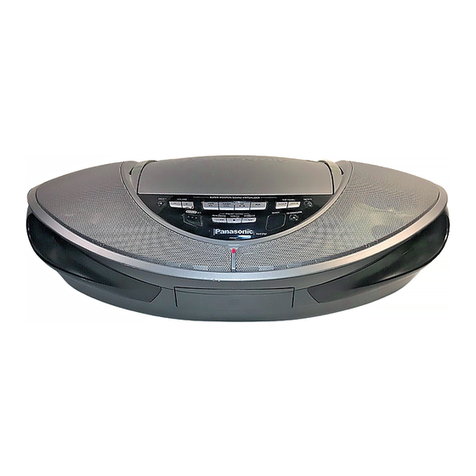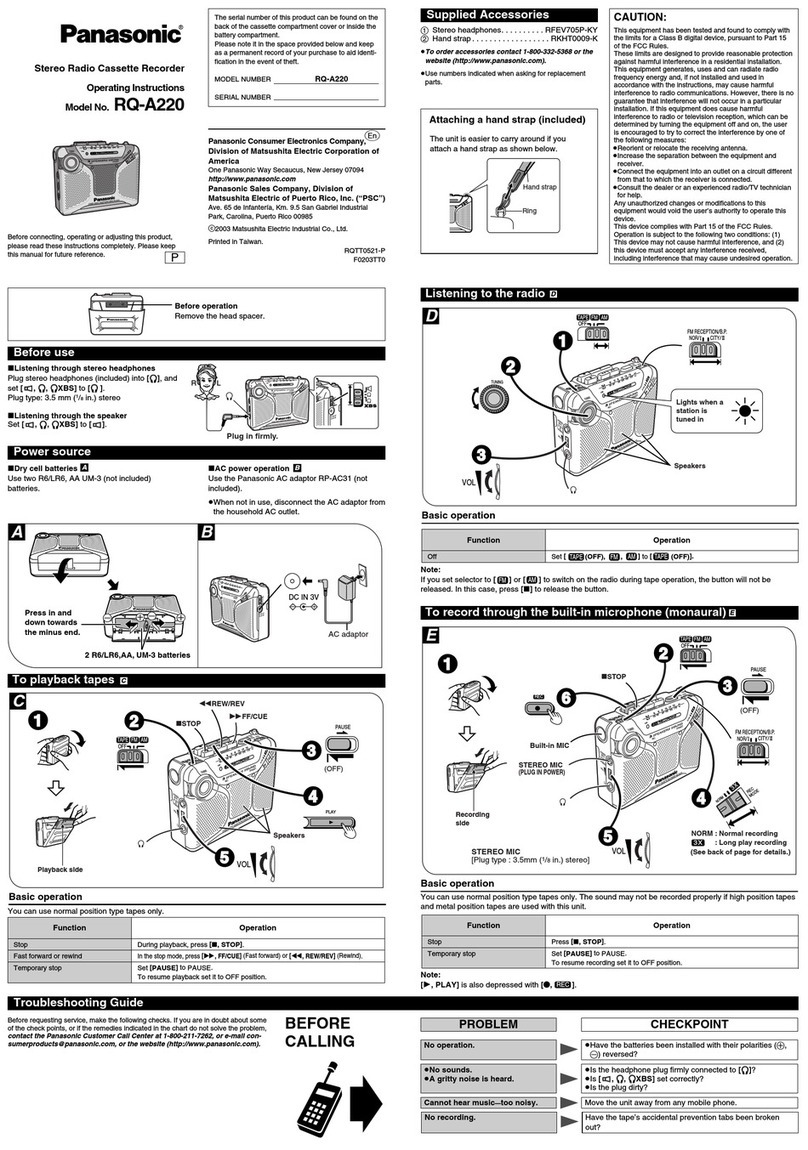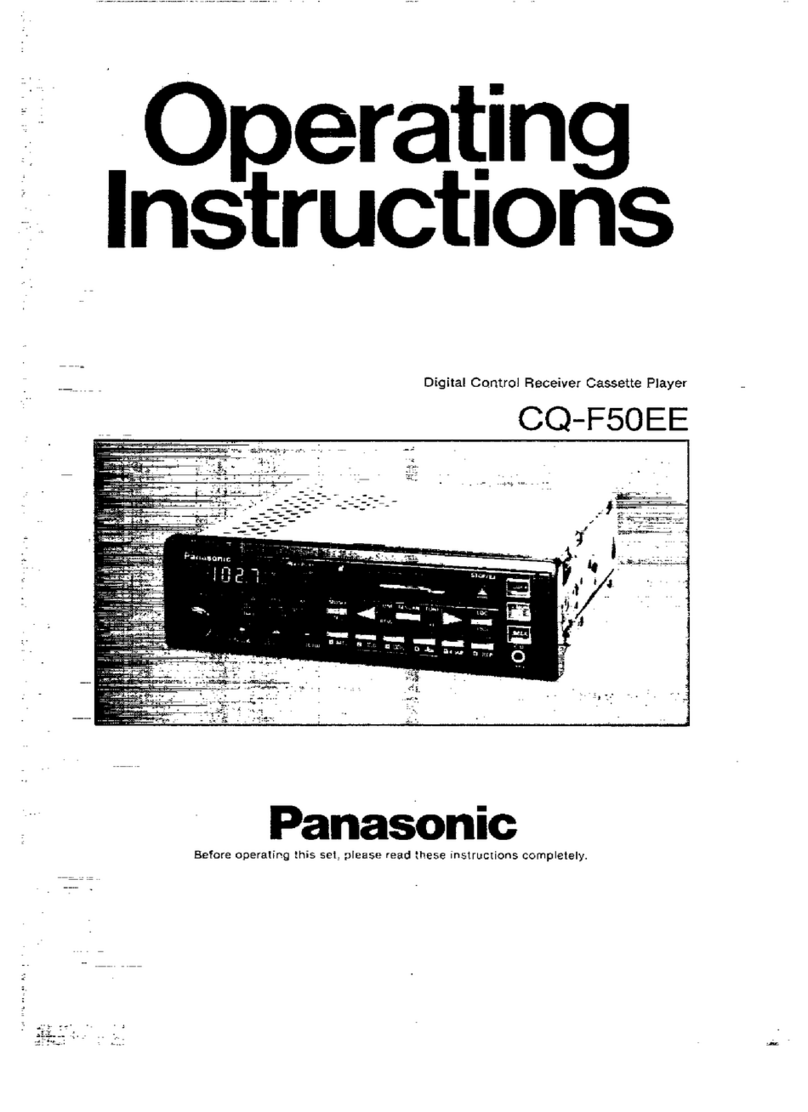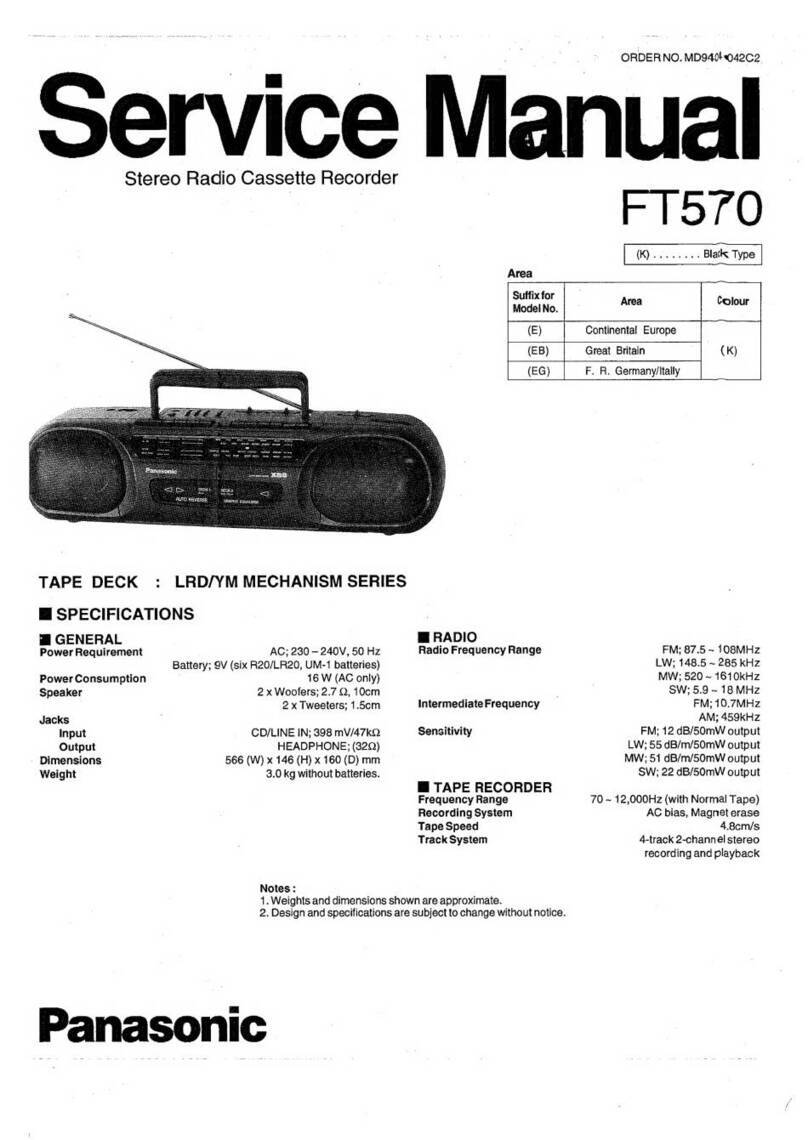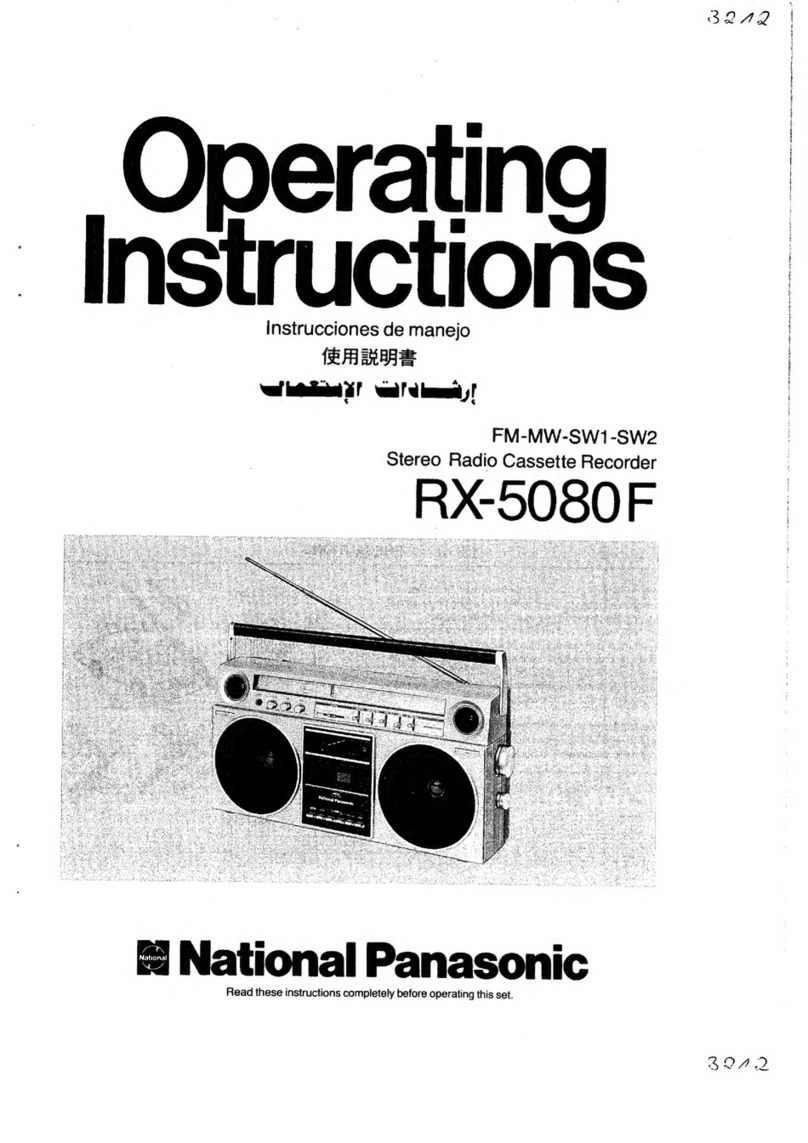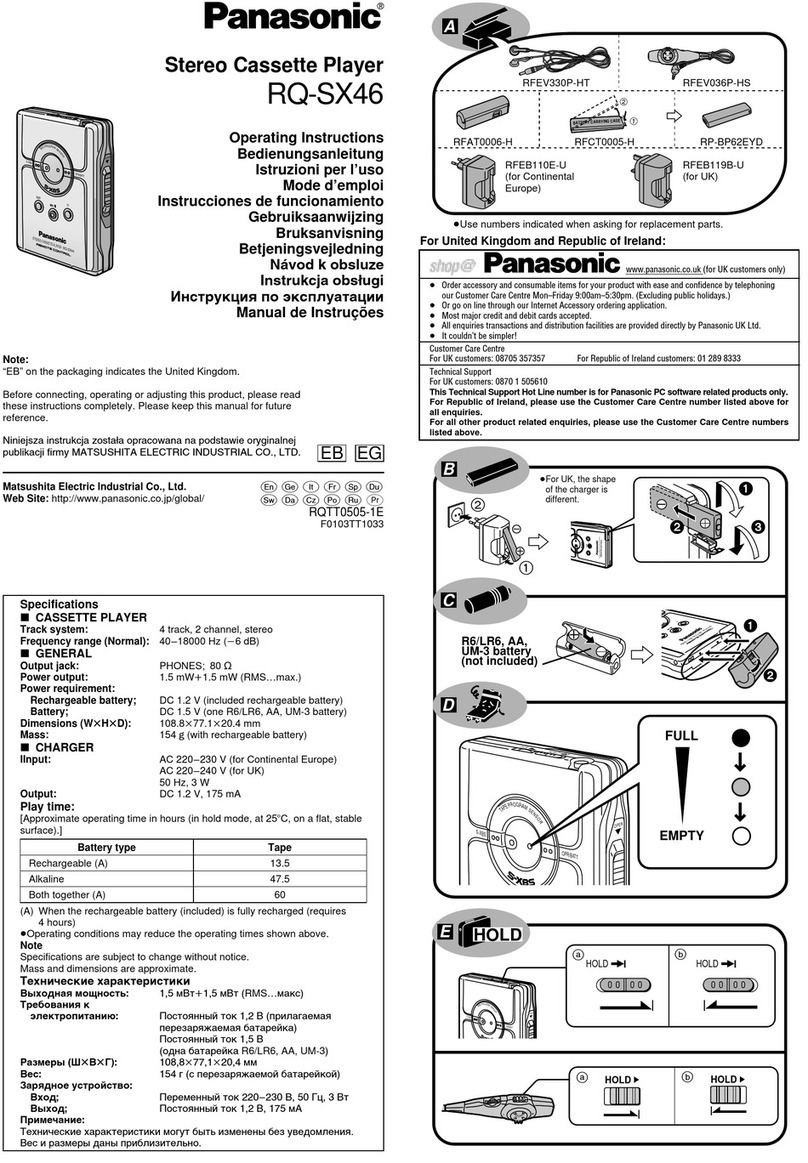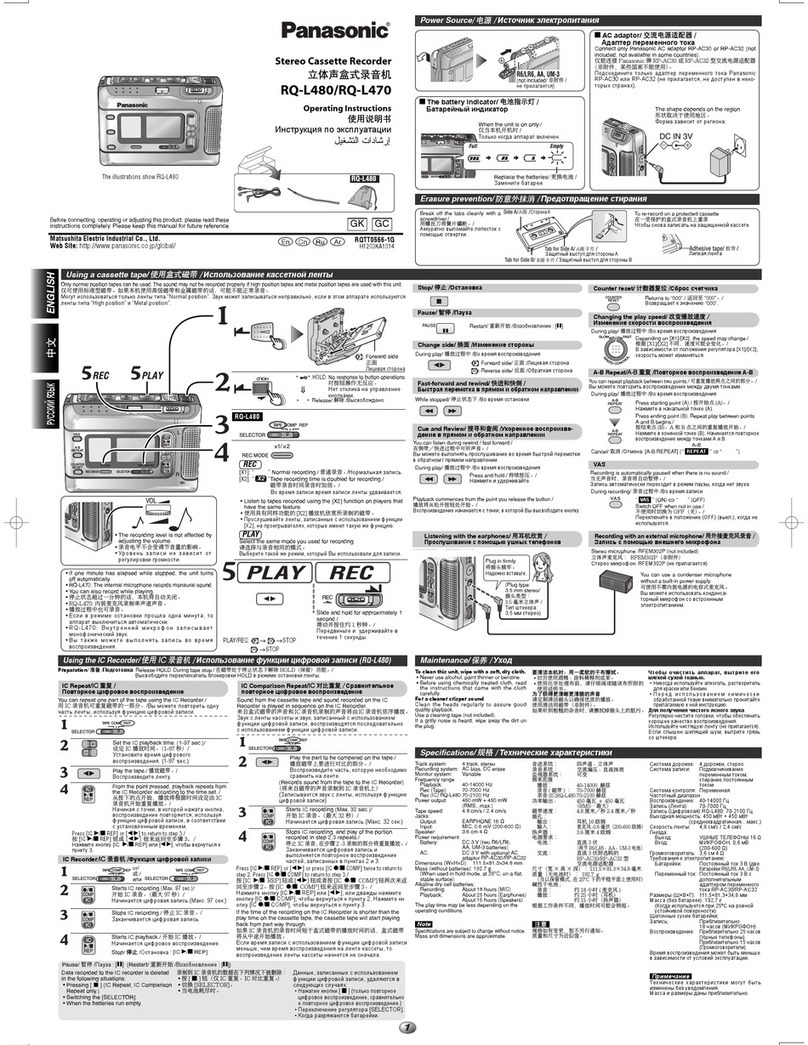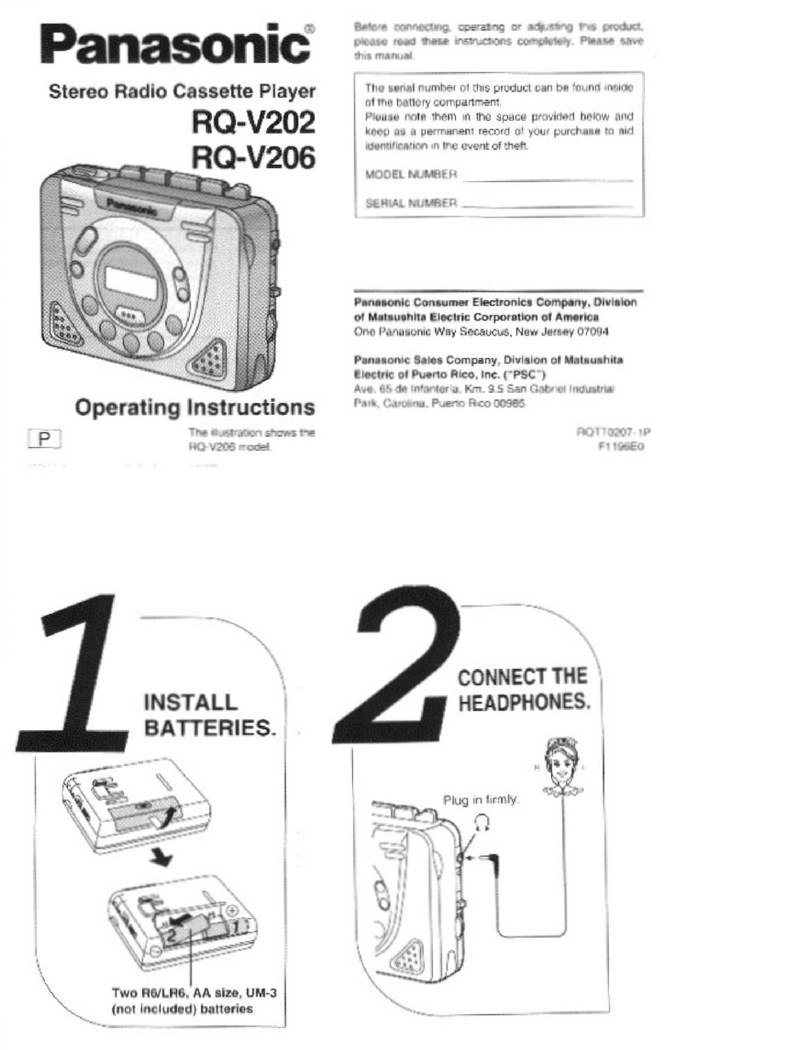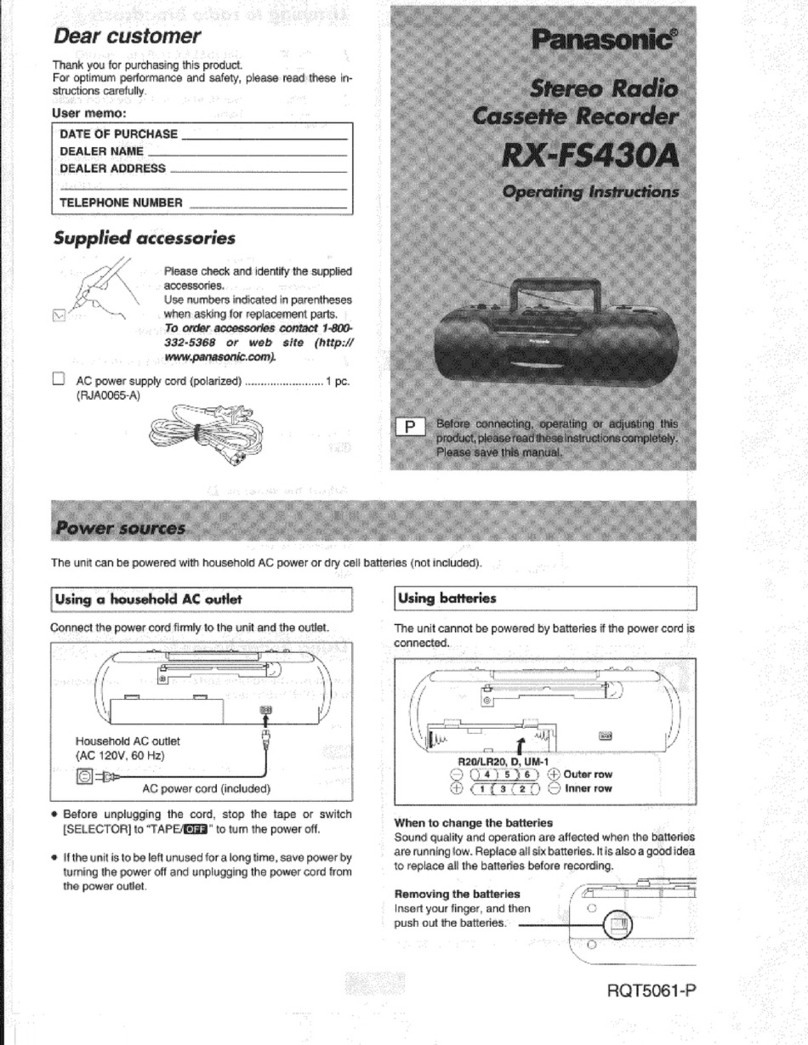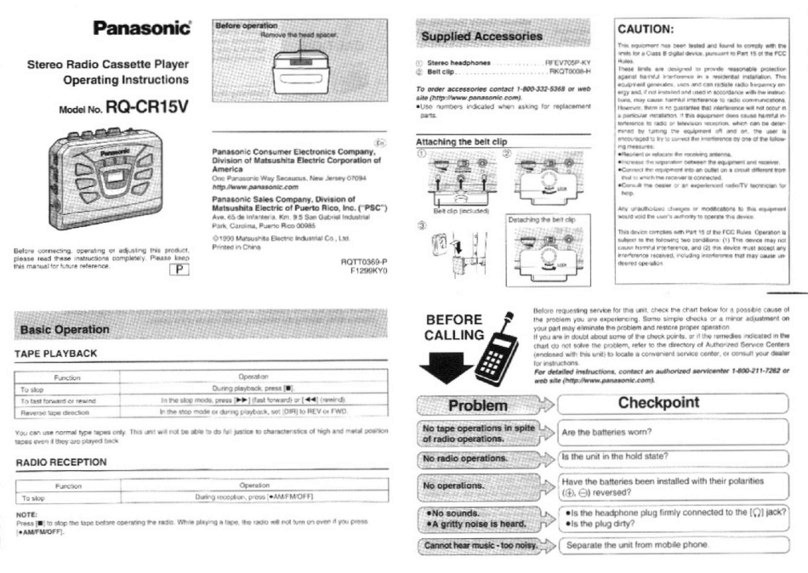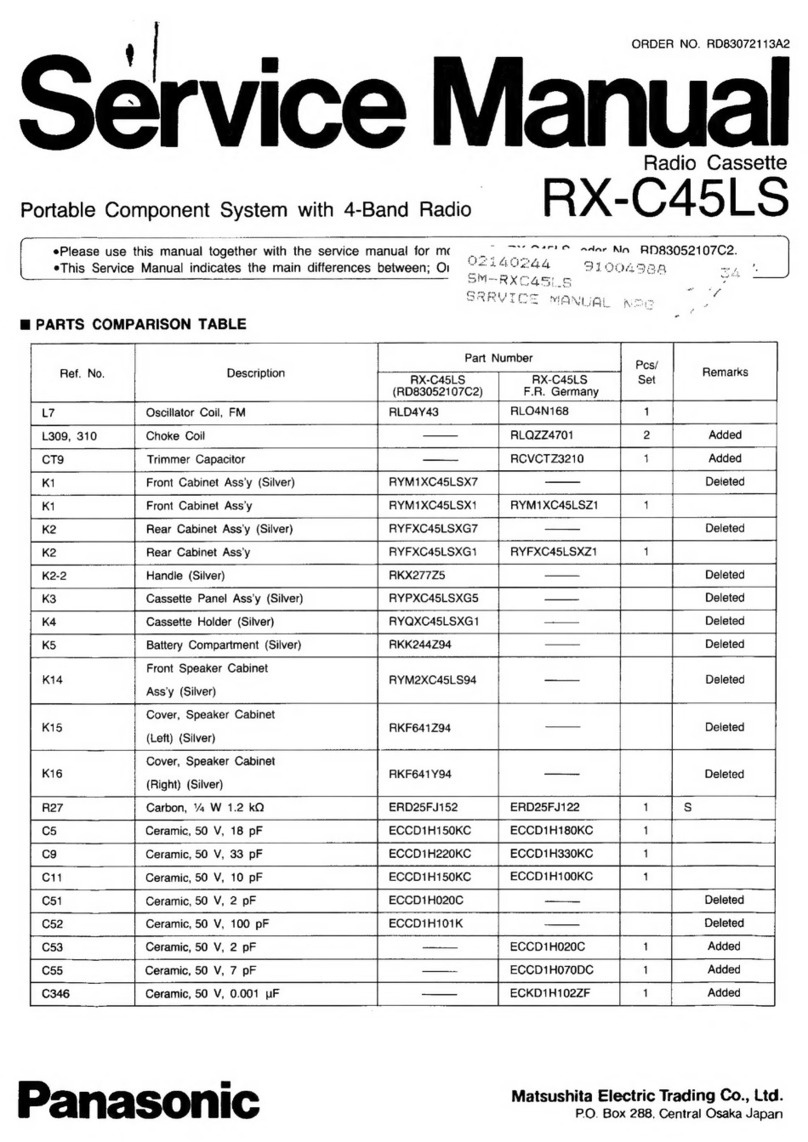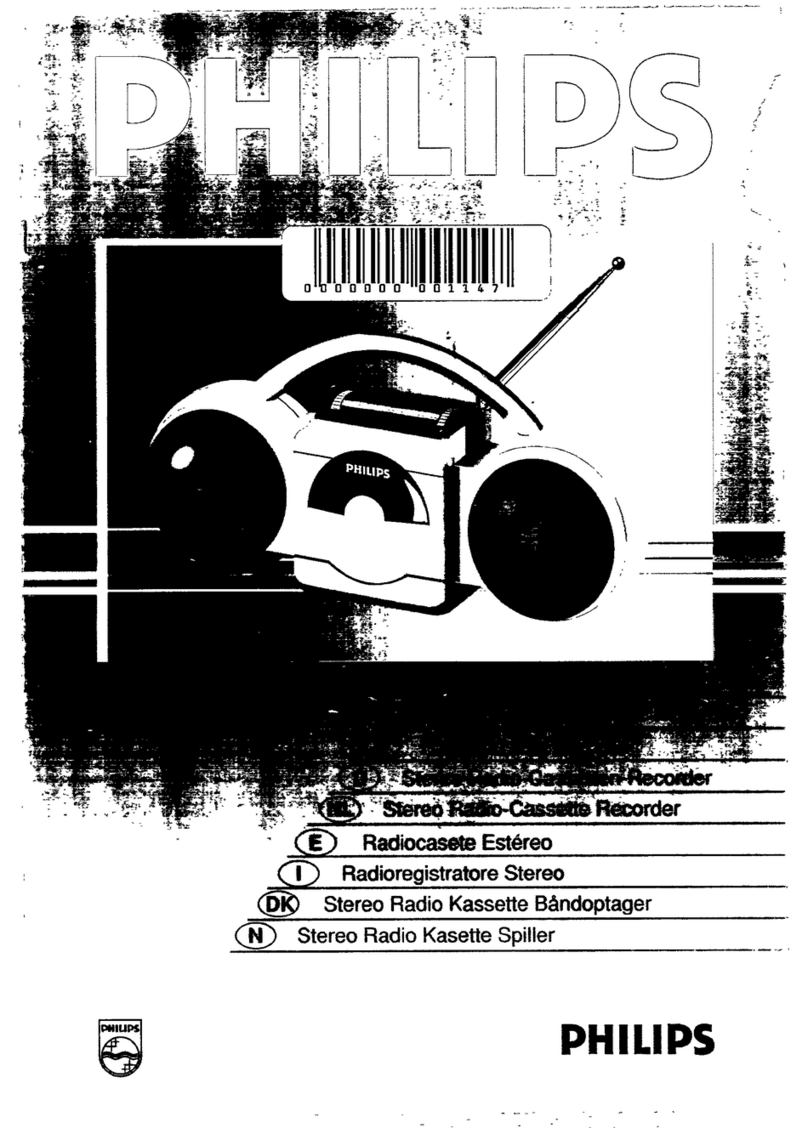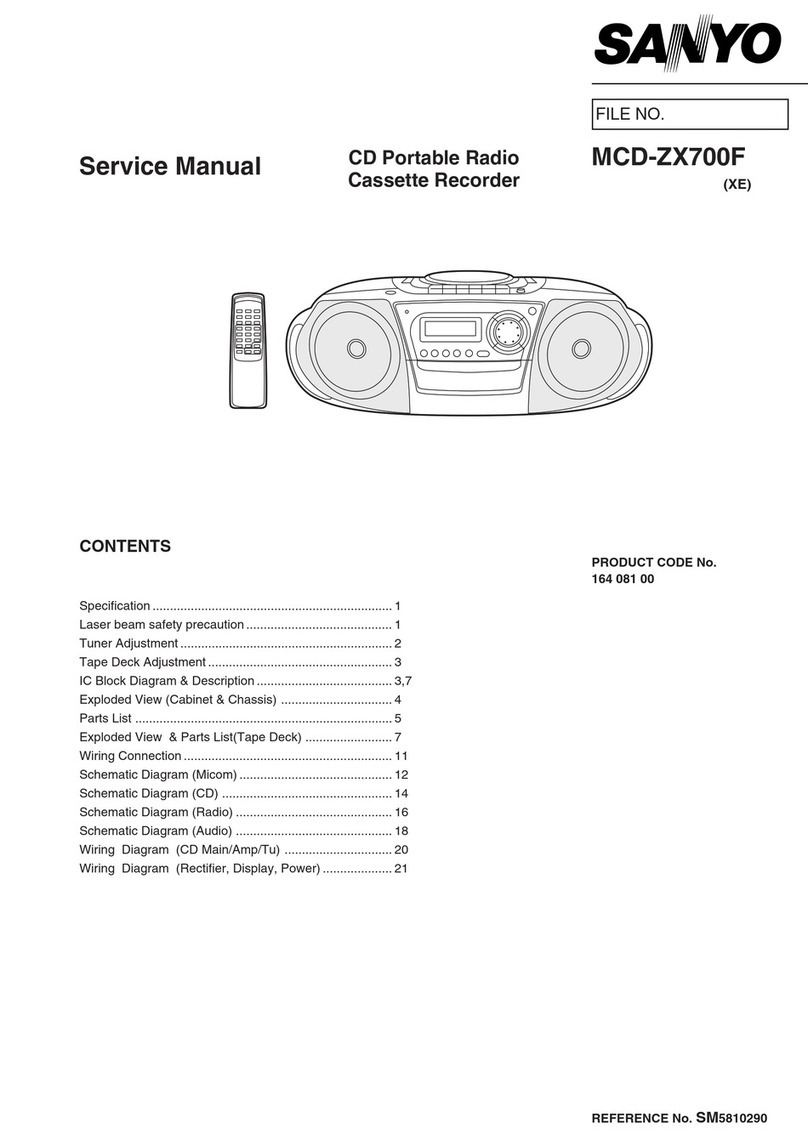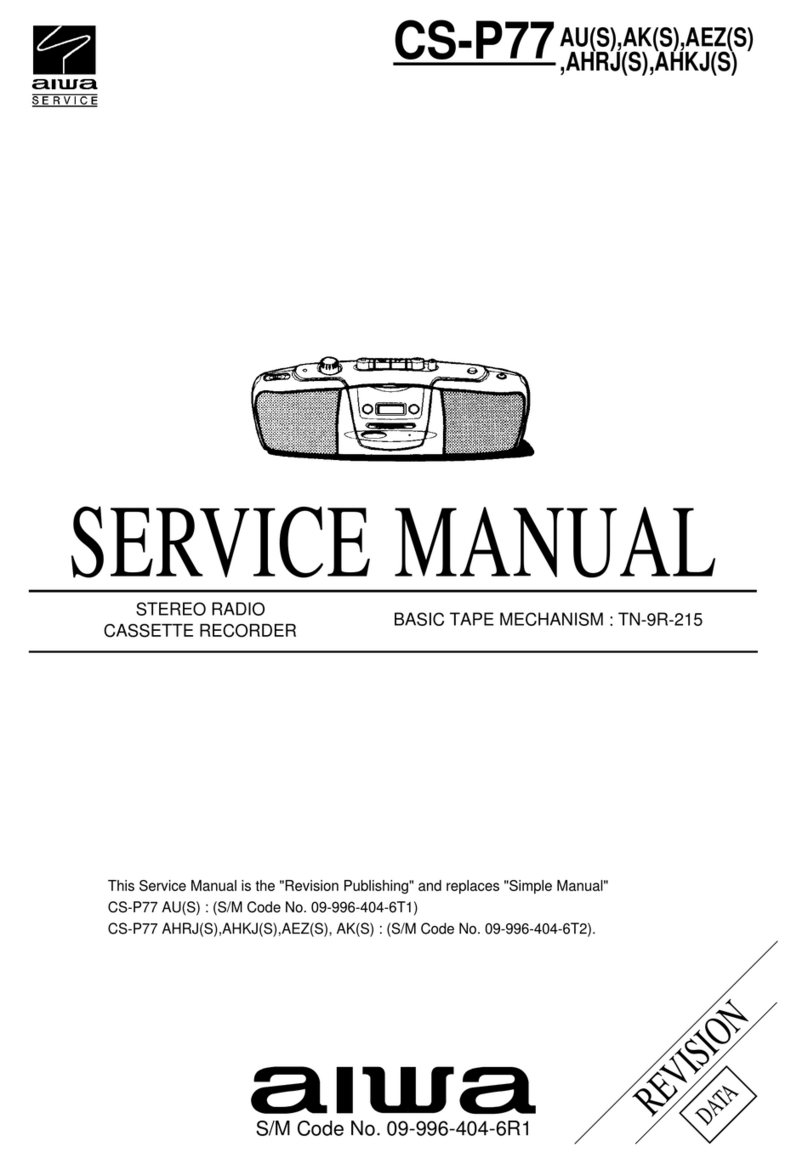Placement Listening caution
1. Ventilation The unit should be situated so that its
location or position does not Interfere with its proper
ventilation. Allow 10 cm (4") clearance from the rear of
the unit.
2. Foreign Material -Care should be tal<en so that objects
do not fall into and liquids are not spilled into the unit. Do
not subject this unit to excessive smoke, dust, me-
chanical vibration, or shock.
3. Magnetism -The unit should be situated away from
equipment or devices ttiat generate strong magnetism.
4. Stacking -Do not place heavy ot>jects. other than
system components, on top of the unit.
5. Surface -Place the unit on aflat, level surface.
6. Carts and Stands -The unit should be used only with a
cart or stand that is recommended by the manufacturer.
The unit and cart combination should
be moved with care. Quick stops, ex-
cessive force, and uneven surfaces
may cause the unit and cart comt)ina-
tion to overturn.
7. Wall or Ceiling Mounting -The unit should not be
mounted to awall or ceiling, unless specified in this
operating instructions.
Maintenance
Selecting fine audio equipment such as the unit
you've just purchased is only the start of your
musical enjoyment. Now it's time to consider
how you can maximize the fun and excitement
your equipment offers. This manufacturer and
the Electronic Industries Association's Con-
sumer Electronics Group want you to get the
most out of your equipment by playing it at a
safe level. One that lets the sound come through loud and
clear without annoying blaring or distortion—and, most
importantly, without affecting your sensitive hearing.
Sound can be deceiving. Over time your hearing "comfort
level" adapts to higher volumes of sound, So what sounds
"normal "can actually be loud and harmful to your hearing.
Guard against this by setting your equipment at asafe level
BEFORE your hearing adapts.
To establish asafe level:
•Start your volume control at alow setting,
•Slowly increase the sound until you can hear it comfortably
and clearly, and without distortion.
Once you have established acomfortable sound level:
•Set the dial and leave it there.
Taking aminute to do this now will help to prevent hearing
damage or loss in the future. After all, we want you listening
for alifetime.
Clean the cabinet, panel and controls with asoft ctoth lightly
moistened witii mild detergent solution.
Do not use any type of abrasive pad, scouring powder or
solvent such as alcohol or benzine.
Service
1. Damage Requiring Service -The unit should be ser-
viced by qualified service personnel when:
(a) The AC power suppjy cord or Vne plug has been
damaged: or
(b) Objects have fallen or ikiuid has been spilled into the
unit: or
(c) The unit has been exposed to rain; or
(d) The unit does not appear to operate normally or
exhibits amarked change in performance; or
(e) The unit has been dropped, or Uie enctosure
damaged.
2. Servicing -The user should not attempt to service the
unit beyond that describied in the operating instructions.
All other servicing should be referred to qualified senrice
personnel.
We Want You Listening For ALifetime
Used wisely, your new sound equipment will provide a
lifetime of fun and enjoyment. Since hearing damage from
loud noise is often undetectable until it is too late, this
manufacturer and the Electronic Industries Association's
Consumer Electronics Group recommend you avoid pro-
longed exposure to excessive noise. This list of sound
levels* is included for your protection.
'The level used here is different from that displayed on the
system's display.
Decibel
Level Example
30 Quiet library, soft whispers
40 Living room, refrigerator, bedroom away from traffic
50 Light traffic, normal conversation, quiet office
60 Air conditioner at 20 feet, sewing machine
70 Vacuum cleaner, hair dryer, noisy restaurant
80 Average city traffic, gart>age disposals, alamn clock
at two feet.
THE FOLLOWING NOISES CAN BE DANGEROUS
UNDER CONSTANT EXPOSURE
90 Subway, motorcycle, truck traffic, lawn mower
100 Garbage truck, chain saw, pneumatic drill
120 Rock band concert in front of speakers, thunderclap
140 Gunshot blast, jet plane
160 Rocket launching pad
Information courtesy of the Deafness Research Foundation.

